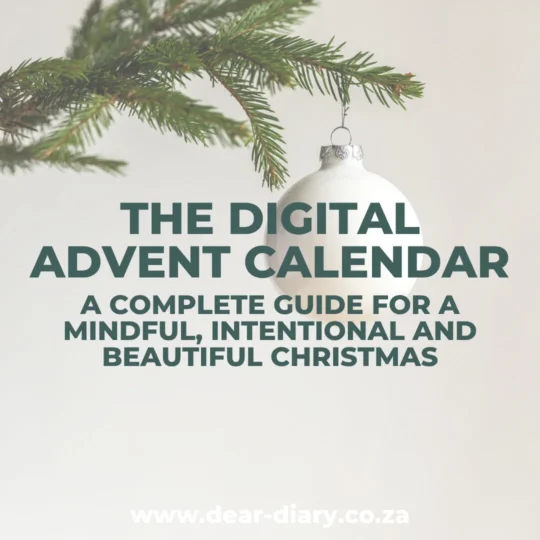Start by identifying your core themes—career, health, relationships, and financial goals—rather than randomly cutting appealing magazine images. Gather materials like printed photos and handwritten words, then create visual hierarchy by prioritising your most important aspirations. Choose colours intentionally: green for wealth, blue for calm, red for action. Display your board somewhere you’ll see it daily and spend 5-10 minutes each morning visualising your goals. The magic happens when you uncover how to maintain momentum.
While goal-setting apps and productivity systems flood the market with complex algorithms and endless notifications, there’s something refreshingly simple about creating a vision board that actually works. You don’t need another subscription or complicated tracking system—just a clear visual representation of where you’re headed.
Start by defining your core themes before you grab scissors and magazines. Identify what truly matters: career advancement, health optimisation, relationships, or financial freedom. Don’t create a random collage of pretty images.
Reflect on your values and clarify which life areas need improvement. This foundation prevents you from building a board that looks inspiration but lacks direction.
Research symbolism that connects with your specific goals. A globe represents travel aspirations, whilst rand notes reinforce financial objectives.
Include power phrases and affirmations like “success,” “balance,” or “growth” that align with your vision. Set SMART goals rather than vague wishes—”secure a promotion to management level” beats “get a better job.” Be specific about what you want to achieve.
Gather materials from magazines, printed photos, or handwritten words. Digital tools like Canva offer template options if you prefer virtual boards. Create visual hierarchy by placing your most important goals in prominent positions.
Colours matter more than you might think—green symbolises wealth, blue represents calm, and red stimulates action. These subliminal touches strengthen your board’s psychological impact.
Display your finished board somewhere you’ll see it daily, like your workspace or bedroom wall. This isn’t decoration—it’s a functional tool requiring consistent interaction.
Spend 5-10 minutes each morning viewing your board whilst mentally rehearsing achieving these goals. Visualisation works like athletic mental training, building neural pathways that improve actual performance. A paperless solution like a digital teacher planner can provide structured templates that complement your vision board by organising your goals into actionable steps.
This practice reduces stress by grounding overwhelming aspirations in tangible visuals, whilst elevating self-esteem through positive self-talk. Regular interaction keeps your goals fresh in your mind through your brain’s reticular activating system, which filters information to highlight opportunities that align with your vision board’s focus. A comprehensive digital planner can complement your vision board by providing structured spaces for breaking down these visualised goals into actionable daily steps.
Update your board regularly by adding new milestones or removing completed objectives. Progress tracking keeps the tool relevant as you evolve. During setbacks, use your board as a reference point to reassess priorities and strengthen resilience.
Include specific categories that matter to your life: career imagery with job titles and company logos, relationship photos representing ideal partnerships, health visuals like yoga poses or nutritious meals. Add travel maps showcasing destinations like Cape Town’s Table Mountain or the Kruger National Park. Teachers specifically may benefit from customisable layouts that adapt their vision boards to fit unique educational workflows and career development goals.
Your vision board becomes a daily reminder aligning actions with long-term aspirations. It activates your subconscious mind, reinforcing focus on what truly matters. Consider creating different types of vision boards to suit your planning style, whether through digital boards using Pinterest for convenience or bullet journals for structured daily progress tracking. Vision boards also serve as a meditative exercise that provides clarity on life goals whilst offering motivation and upliftment. The creative activities involved in making and updating your board can provide a therapeutic distraction from negative thought patterns. Many successful planners integrate vision boards with comprehensive planning systems that include yearly planning elements such as goal setting, travel dreams, and three-year overviews to create powerful alignment between dreams and action. For those seeking a more structured approach, consider incorporating habit trackers alongside your vision board to monitor daily progress towards your visualised goals. Share it with trusted friends to deepen commitment—accountability amplifies results when you’re serious about change.
Frequently Asked Questions
How Often Should I Update or Change My Vision Board?
You should update your vision board monthly for minor adjustments, quarterly for major goal shifts, and annually for complete overhauls. Make immediate changes when life circumstances shift considerably to keep it relevant and motivating.
What Size Should My Vision Board Be for Maximum Effectiveness?
You’ll want to size your vision board based on your display space. Use 1920×1080 for digital screens or A3/poster size for physical boards. Larger formats increase visual impact and daily engagement with your goals.
Should I Keep My Vision Board Private or Share It Publicly?
You’ll benefit most from strategic sharing rather than complete privacy or full publicity. Share with trusted mentors or accountability partners who’ll provide constructive feedback whilst keeping your deepest goals private for introspective motivation.
How Long Does It Typically Take to See Results From Vision Boards?
You’ll typically see initial motivation and clarity within days, but meaningful results usually emerge after 3-6 months of consistent daily engagement. Business goals often show progress faster than personal objectives.
Can I Create Multiple Vision Boards for Different Life Areas Simultaneously?
You can absolutely create multiple vision boards simultaneously for different life areas. Start with 3-4 core categories like career, health, and relationships. Use separate formats—digital boards, mini planners, or themed corkboards for focussed clarity.





